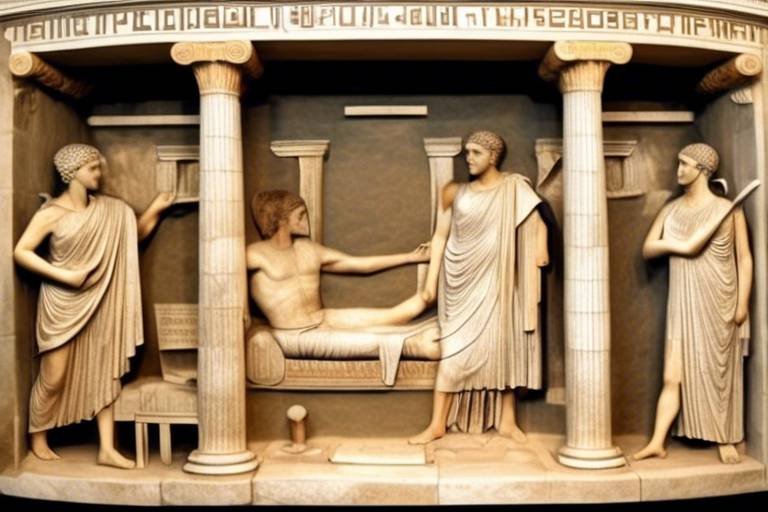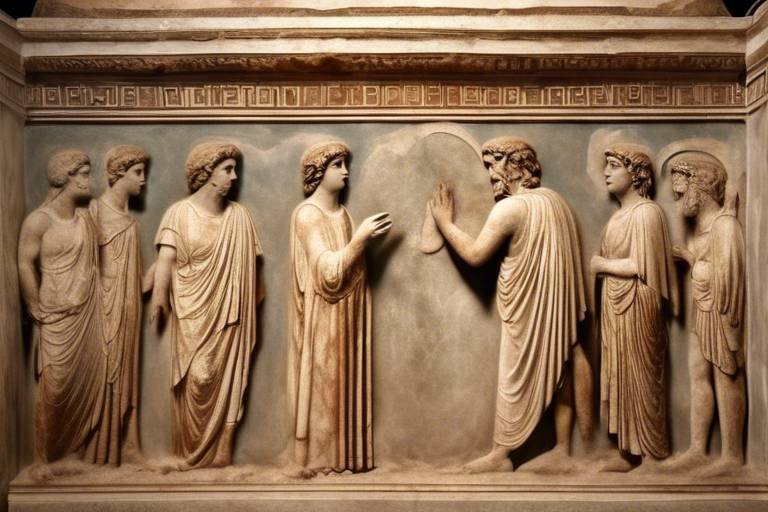The Enigma of the Ancient Mediterranean Cultures
The ancient Mediterranean cultures have long been a source of fascination and intrigue, shrouded in mystery and enigma. From the majestic pyramids of the Egyptians to the philosophical teachings of the Greeks, each civilization holds a unique allure that continues to captivate scholars and enthusiasts alike. These ancient societies, including the Egyptians, Greeks, Romans, Phoenicians, Minoans, Mycenaeans, Carthaginians, Etruscans, and more, left behind a legacy of art, architecture, and beliefs that offer glimpses into their rich and complex world.
Exploring the Egyptian civilization unveils a world of advanced technology, intricate belief systems, and monumental structures that defy explanation. The hieroglyphics, complex burial practices, and awe-inspiring pyramids stand as testaments to the ingenuity and spiritual depth of this ancient culture. What secrets lie buried within the sands of time, waiting to be uncovered by modern archaeologists?
Delving into Greek mythology and philosophy reveals a tapestry of gods, heroes, and timeless wisdom that continue to influence modern thought. The mythical tales of Zeus, Athena, and the epic adventures of heroes like Odysseus transport us to a realm where the boundaries between the mortal and divine blur. How did the ancient Greeks envision the cosmos and their place within it?
The Roman Empire, with its grandeur and engineering feats, showcases the might and ambition of a civilization that shaped the course of history. From the iconic Colosseum to the intricate road networks that spanned vast territories, the Romans left an indelible mark on the ancient world. What lessons can we learn from their rise to power and eventual decline?
The Phoenicians, masters of seafaring and trade, navigated the Mediterranean waters with skill and daring, establishing colonies and trade networks that connected distant lands. Their legacy of cultural exchange and economic prosperity continues to resonate in the modern world. How did their maritime prowess shape the course of history?
Investigating the enigmatic Minoan and Mycenaean civilizations offers a glimpse into the artistic achievements and societal structures of ancient Crete and mainland Greece. The sophisticated palaces, intricate frescoes, and mysterious decline of these cultures raise questions about their origins and ultimate fate. What led to the downfall of these once-flourishing societies?
The Carthaginian Empire, known for its military prowess and conflicts with Rome, stands as a testament to the rivalries and power struggles that defined the ancient Mediterranean world. The epic clashes of the Punic Wars and the cultural legacy of Carthage highlight the complex interplay of politics, warfare, and trade in the ancient world. How did these ancient superpowers shape the geopolitical landscape of their time?
Exploring the artistic expressions and religious beliefs of the Etruscans offers a glimpse into a civilization that predates Rome and left behind a legacy of vibrant frescoes, intricate tombs, and unique funerary customs. The enigmatic nature of Etruscan art and religion raises questions about their cultural practices and beliefs. What insights can we gain from their artistic legacy?
The Hellenistic period, marked by cultural syncretism and artistic innovation, saw the spread of Greek influence across the Mediterranean world, blending with local traditions to create a dynamic fusion of art, architecture, and ideas. The diverse cultural interactions of this era offer a window into a world where creativity and diversity flourished. How did the Hellenistic period shape the cultural landscape of the ancient Mediterranean?
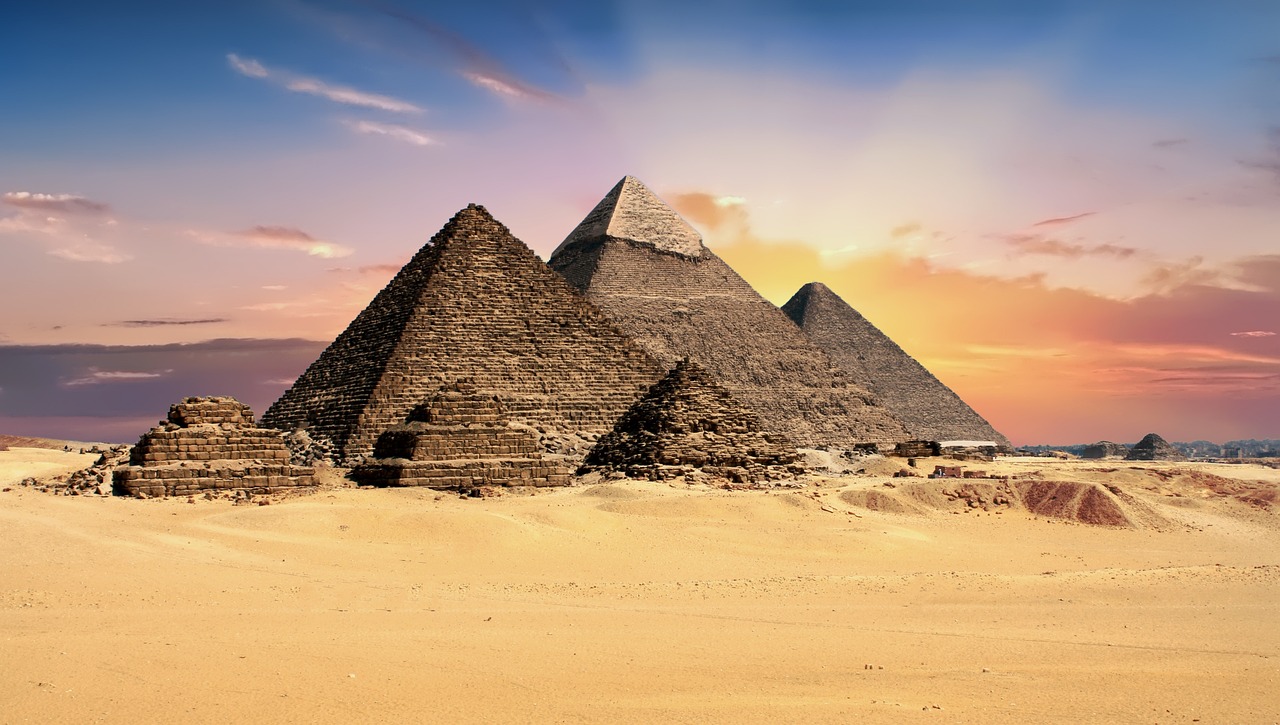
Egyptian Civilization
The Egyptian Civilization stands as a beacon of ancient grandeur and mystery, shrouded in the sands of time. From the colossal pyramids that defy logic to the intricate hieroglyphics that whisper tales of the past, Egypt holds a treasure trove of wonders waiting to be uncovered. The advanced technology and architectural prowess of the ancient Egyptians continue to baffle modern minds, showcasing a level of sophistication that defies their era.
One cannot delve into the realm of Egyptian civilization without encountering their intricate belief systems and complex burial practices. The Egyptians' reverence for the afterlife and their meticulous preparations for the journey beyond captivate archaeologists and historians alike. The enigmatic rituals surrounding death and rebirth offer a glimpse into a culture deeply intertwined with the mysteries of existence.
Moreover, the artistry and craftsmanship of the ancient Egyptians are unparalleled, with their monumental structures serving as a testament to their ingenuity. The pyramids, temples, and statues that dot the landscape speak of a society deeply rooted in spirituality and symbolism, where every carving and painting held significance beyond mere aesthetics.
Exploring the annals of Egyptian history unveils a civilization that thrived along the banks of the Nile, harnessing the river's life-giving waters to cultivate a flourishing society. The legacy of the pharaohs, the splendor of their tombs, and the enduring allure of their artifacts continue to beckon adventurers and scholars to unravel the enigma of Egypt.
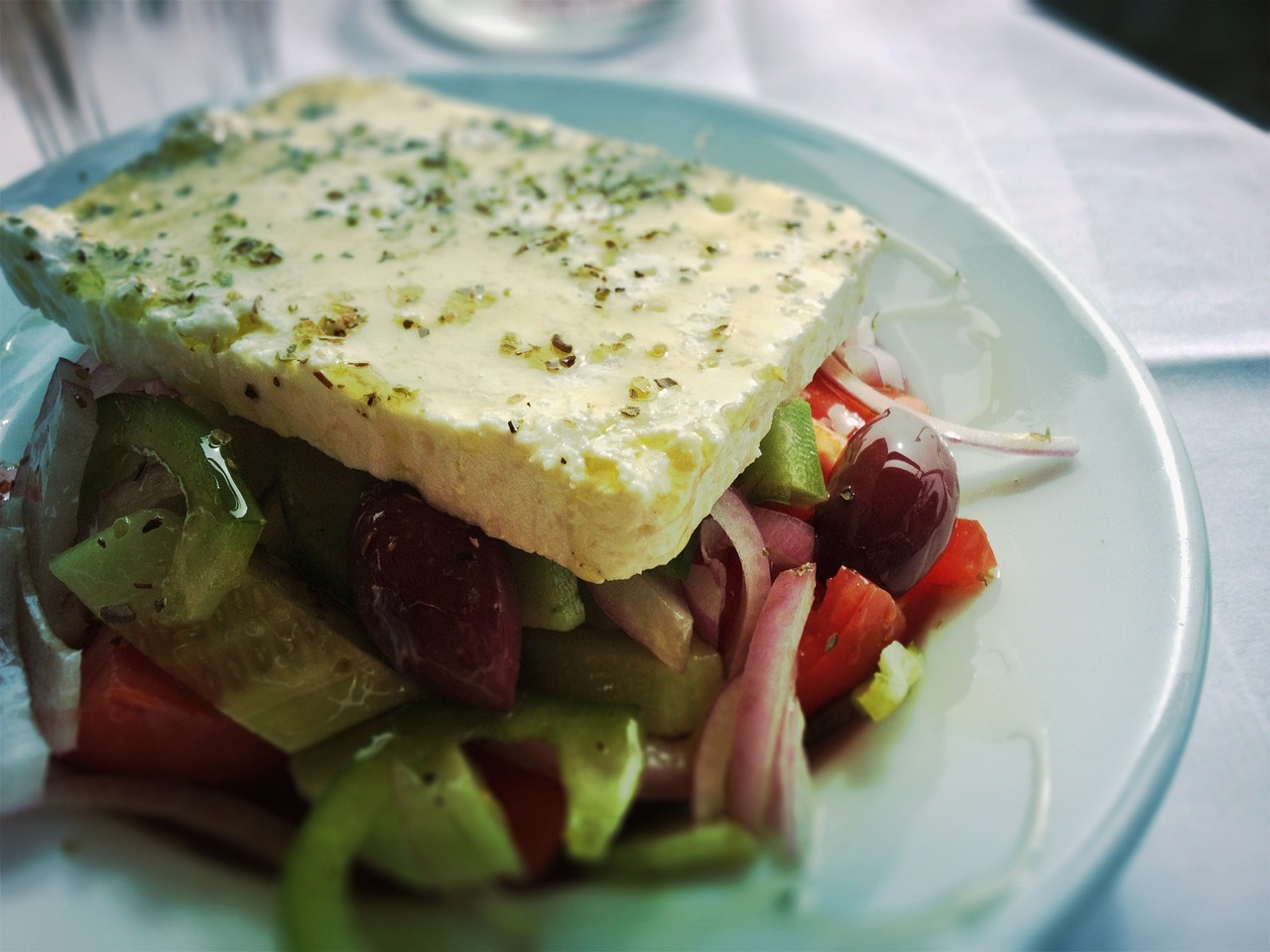
Greek Mythology and Philosophy
Greek mythology and philosophy stand as pillars of ancient Mediterranean culture, weaving intricate tales of gods and heroes with profound philosophical insights that continue to resonate through the ages. The Greeks, with their pantheon of deities led by powerful figures like Zeus, Hera, and Athena, crafted myths that explained the mysteries of the world and reflected human virtues and flaws. These myths were not mere stories but reflections of societal values, offering moral lessons and insights into the human condition.
Moreover, Greek philosophy, spearheaded by renowned thinkers such as Socrates, Plato, and Aristotle, delved into fundamental questions about existence, knowledge, and ethics. Their philosophical inquiries laid the groundwork for Western philosophy, exploring concepts of justice, truth, and the nature of reality. The Socratic method of questioning and critical thinking became a hallmark of Greek philosophical discourse, challenging assumptions and fostering intellectual growth.
Through their myths and philosophical inquiries, the ancient Greeks sought to understand the complexities of the world and human experience, inspiring generations of thinkers and artists to ponder life's mysteries and strive for wisdom. The enduring legacy of Greek mythology and philosophy serves as a testament to the intellectual and creative brilliance of this ancient civilization, shaping the cultural landscape of the Mediterranean and beyond.
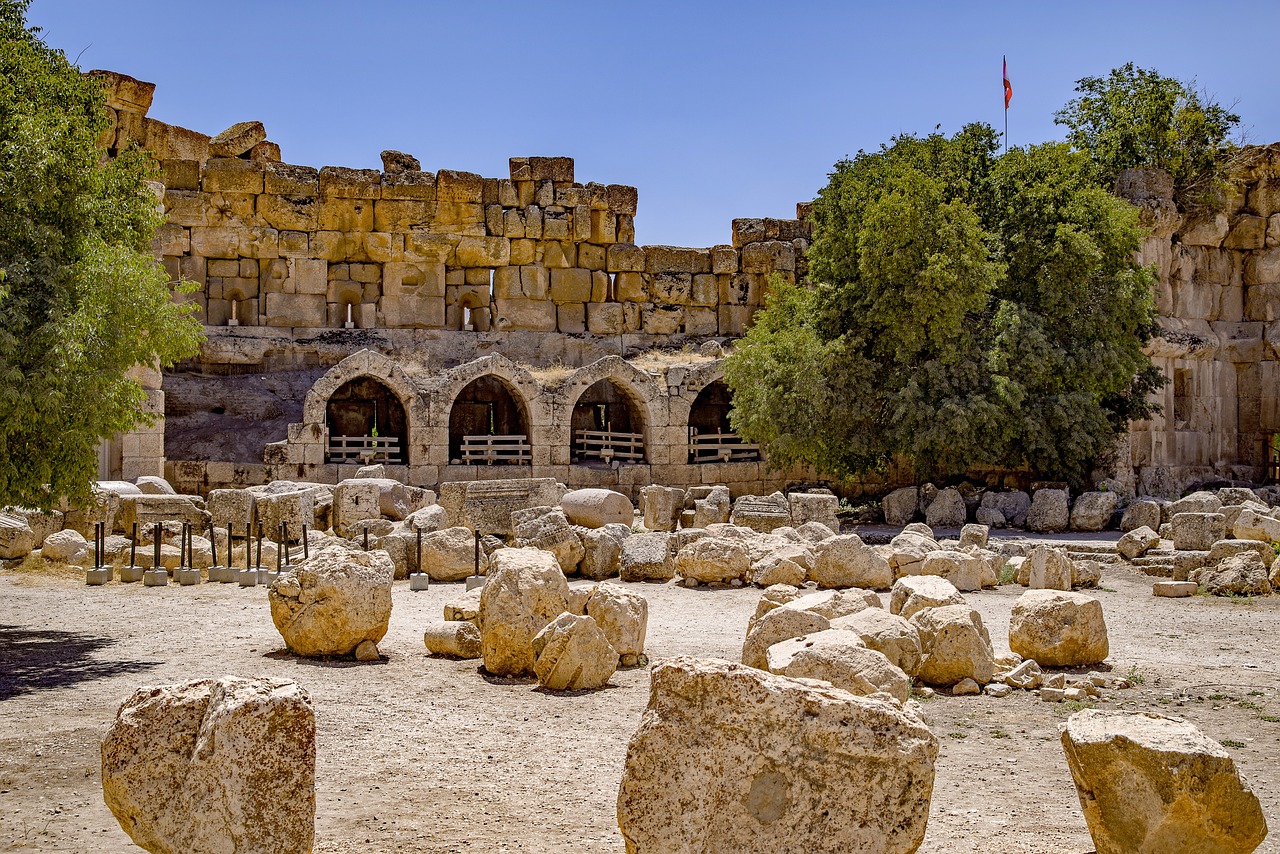
Roman Empire and Architecture
The Roman Empire stands as a monumental testament to the heights of ancient civilization, both in terms of its expansive territories and architectural marvels. From the iconic Colosseum that symbolizes grandeur and entertainment to the intricate network of aqueducts that showcased engineering genius, Roman architecture continues to awe and inspire. The Romans not only built structures for practical purposes but also infused them with artistic and aesthetic value, creating a lasting legacy that defines the ancient world.

Phoenician Seafaring and Trade
Topics to be discussed in the article include the mysterious civilizations, customs, and artifacts of ancient Mediterranean cultures, such as the Egyptians, Greeks, Romans, and Phoenicians, shedding light on their enigmatic practices and beliefs.
The Phoenicians were renowned for their exceptional seafaring skills and extensive trade networks that spanned the ancient Mediterranean region. Their mastery of navigation allowed them to establish prosperous colonies and engage in lucrative commerce, shaping cultural exchange and economic development in the ancient world.
Setting sail from their homeland in the eastern Mediterranean, Phoenician sailors ventured far and wide, reaching distant shores to trade goods such as textiles, glassware, and precious metals. Their ships, equipped with advanced navigational tools for that era, navigated treacherous waters with remarkable precision, solidifying their reputation as maritime pioneers.
One of the key aspects of Phoenician trade was their establishment of trading posts and colonies along major trade routes, strategically positioned to facilitate the exchange of goods between different regions. These outposts not only served as hubs for commerce but also as centers for cultural diffusion, where ideas, technologies, and customs were shared and intermingled.
The Phoenicians' dominance in maritime trade not only brought them wealth and influence but also enabled them to spread their cultural practices and influence across the Mediterranean. Their legacy in navigation, commerce, and colonization left a lasting impact on the ancient world, shaping the course of history and paving the way for future civilizations to thrive on the seas.
Through their seafaring adventures and thriving trade networks, the Phoenicians played a pivotal role in connecting diverse cultures and fostering a dynamic exchange of goods, ideas, and innovations. Their legacy as skilled sailors and astute traders continues to intrigue historians and archaeologists, offering a glimpse into the vibrant and interconnected world of the ancient Mediterranean.
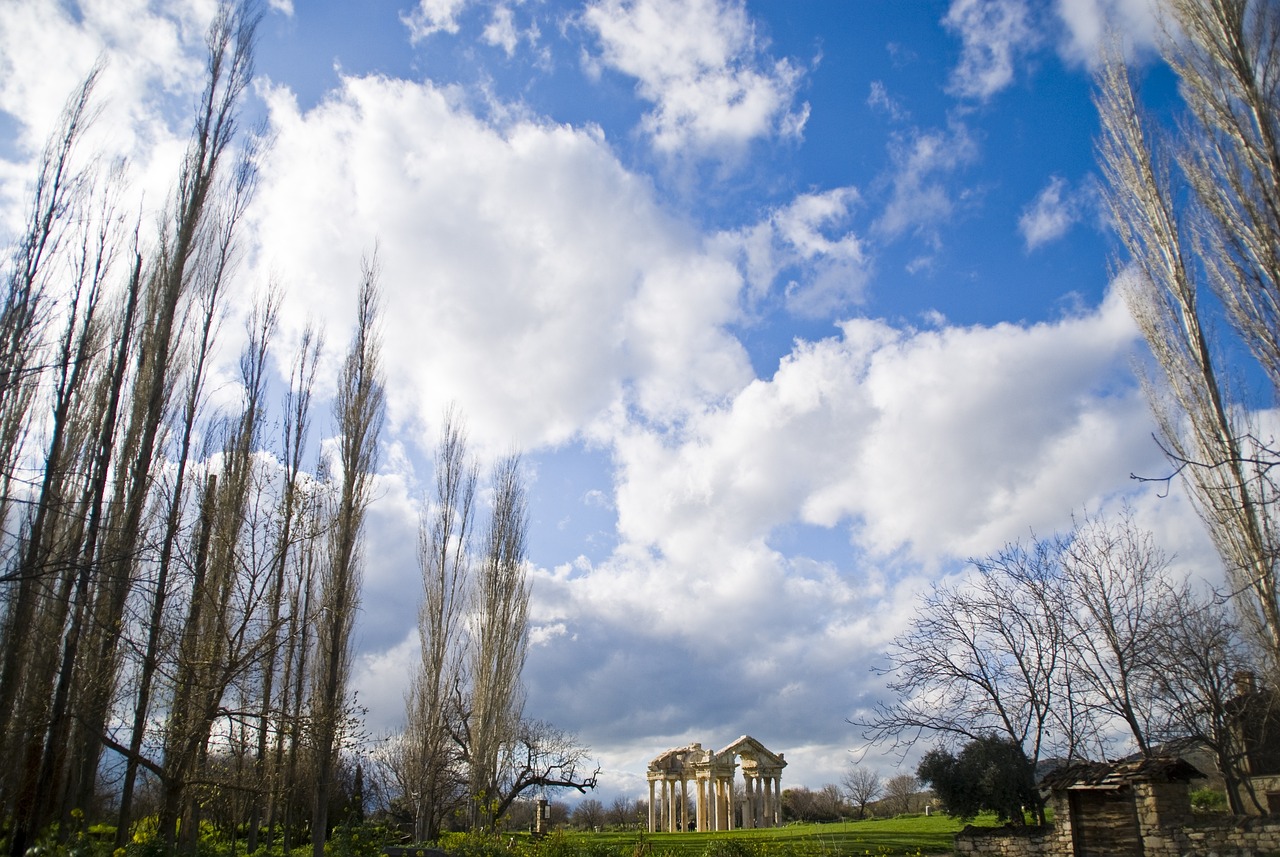
Minoan and Mycenaean Civilizations
The Minoan and Mycenaean civilizations, two distinct yet interconnected ancient cultures that flourished in the Mediterranean region, offer a fascinating glimpse into the complexities of prehistoric societies. The Minoans, centered on the island of Crete, are renowned for their advanced architecture, vibrant frescoes, and intricate palaces such as the famous Knossos. Their artistic achievements and maritime trade networks indicate a sophisticated society with a strong emphasis on culture and commerce.
On the other hand, the Mycenaeans, who inhabited mainland Greece, are known for their impressive fortifications, such as the citadel of Mycenae, and their warrior culture as depicted in the epic poems of Homer. The Mycenaean civilization, with its rich burial practices and intricate gold artifacts, reflects a society structured around power dynamics and military prowess.
Despite their unique characteristics, the Minoan and Mycenaean civilizations shared cultural exchanges and influences, evident in the Mycenaean adaptation of Minoan art and religious practices. The mysterious decline of the Minoans, possibly due to natural disasters or invasions, paved the way for the rise of the Mycenaeans, who eventually succumbed to the turmoil of the Late Bronze Age collapse.
Archaeological discoveries continue to unravel the enigmatic aspects of these ancient cultures, shedding light on their societal structures, religious beliefs, and interactions with neighboring civilizations. The legacy of the Minoan and Mycenaean civilizations persists in the art, architecture, and mythology of ancient Greece, leaving a lasting impact on the cultural landscape of the Mediterranean world.

Carthaginian Empire and Conflict
The Carthaginian Empire stands as a formidable force in ancient Mediterranean history, known for its strategic prowess, maritime dominance, and epic conflicts with rival powers, most notably Rome. Emerging as a powerful trading civilization centered in Carthage, located in present-day Tunisia, the Carthaginians established a vast network of colonies and trade routes across the Mediterranean, amassing wealth and influence.
One of the most famous conflicts involving the Carthaginian Empire was the series of wars known as the Punic Wars, fought against the expanding Roman Republic. These wars, particularly the Second Punic War led by the legendary Carthaginian general Hannibal, showcased the military might and innovative tactics of the Carthaginians, including the use of war elephants in battle.
The Carthaginians were renowned for their naval expertise, controlling the seas with a formidable fleet and engaging in maritime trade that enriched their empire. Their conflicts with Rome were not only military but also economic and political, as both powers vied for dominance in the Mediterranean region.
Despite their military achievements and cultural contributions, such as their distinctive art and architecture, the Carthaginian Empire eventually faced defeat at the hands of Rome, culminating in the destruction of Carthage in 146 BC after the Third Punic War. The fall of Carthage marked the end of an era and the rise of Roman hegemony in the Mediterranean.

Etruscan Art and Religion
The Etruscans, an ancient civilization that thrived in what is now modern-day Italy, left behind a rich legacy of art and religious practices that continue to intrigue historians and archaeologists. Known for their intricate and vibrant artistic expressions, the Etruscans adorned their tombs with elaborate frescoes depicting scenes from daily life, mythology, and religious rituals. These colorful paintings provide valuable insights into Etruscan society, beliefs, and customs, showcasing their reverence for the afterlife and the divine.
Furthermore, Etruscan art often featured intricate metalwork, such as bronze sculptures and jewelry, showcasing their skill in metallurgy and craftsmanship. These artifacts not only served as decorative items but also held symbolic significance in religious ceremonies and burial rituals. The Etruscans believed in the importance of honoring the deceased and ensuring a prosperous journey to the underworld, reflected in the elaborate funerary objects found in their tombs.
Regarding religion, the Etruscans had a complex system of beliefs centered around divination, the interpretation of omens, and communication with the gods. They consulted priests known as haruspices who interpreted the entrails of sacrificed animals to predict the future and seek divine guidance. This practice, known as hepatoscopy, played a crucial role in Etruscan religious ceremonies and decision-making processes, demonstrating their deep connection to the spiritual realm.
In addition to their artistic and religious practices, the Etruscans were also skilled engineers and urban planners, constructing impressive cities and infrastructure that reflected their advanced knowledge and organizational skills. Their architectural achievements, such as the underground tombs in Tarquinia and the city of Veii, highlight the Etruscans' innovative approach to urban design and construction techniques.
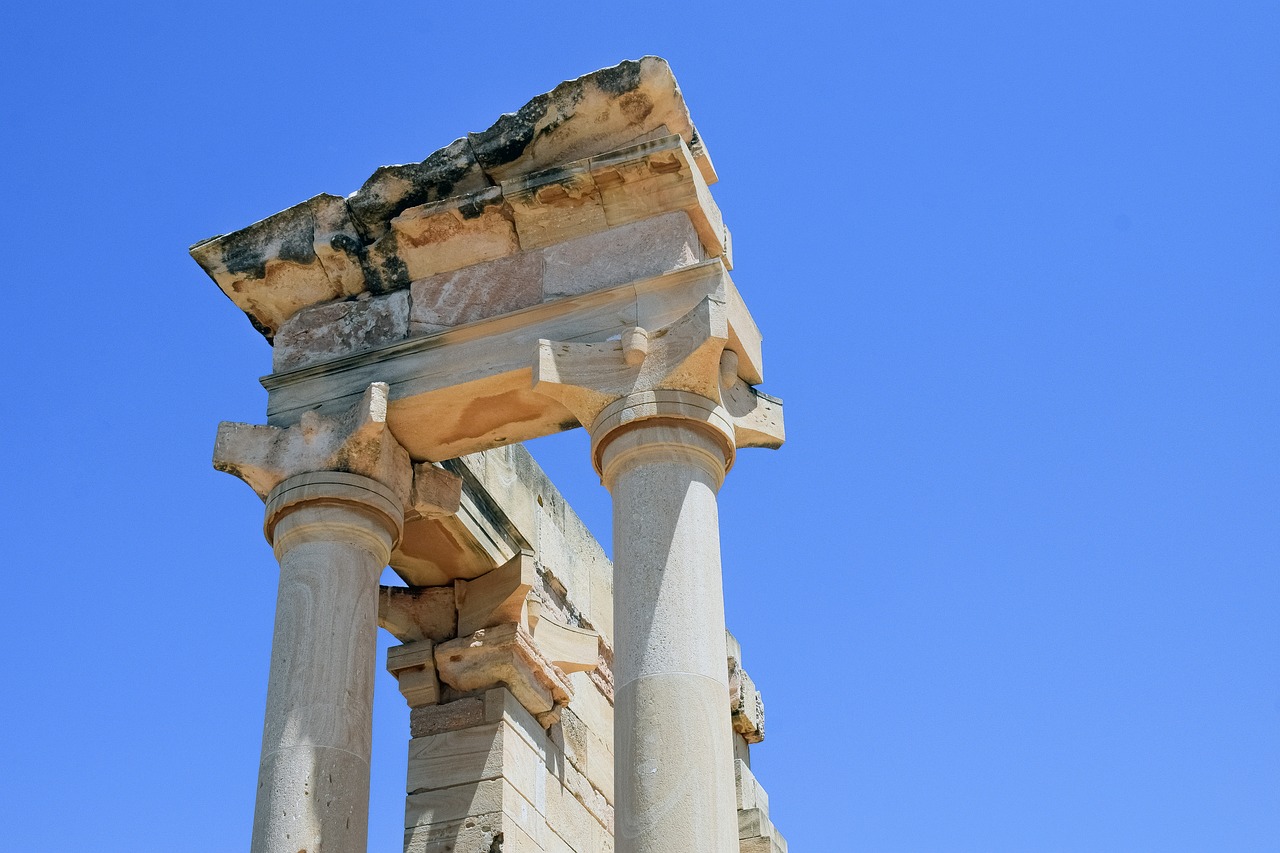
Hellenistic Period and Cultural Syncretism
Topics to be discussed in the article include the mysterious civilizations, customs, and artifacts of ancient Mediterranean cultures, such as the Egyptians, Greeks, Romans, and Phoenicians, shedding light on their enigmatic practices and beliefs.
Exploring the rich history, advanced technology, and intricate belief systems of the ancient Egyptians, known for their monumental pyramids, hieroglyphics, and complex burial practices that continue to captivate archaeologists and historians.
Delving into the mythical tales, gods, and philosophical teachings of the ancient Greeks, whose contributions to literature, art, and intellectual thought have had a lasting impact on Western culture and continue to inspire modern interpretations.
Uncovering the grandeur and engineering marvels of the Roman Empire, renowned for its vast territories, innovative infrastructure, and iconic architectural wonders like the Colosseum, aqueducts, and intricate road networks that shaped the ancient world.
Examining the maritime prowess and commercial ventures of the Phoenicians, a seafaring civilization known for their skilled navigation, extensive trade networks, and establishment of prosperous colonies across the Mediterranean region, influencing cultural exchange and economic development.
Investigating the enigmatic Minoan and Mycenaean civilizations of ancient Crete and mainland Greece, characterized by their sophisticated palaces, artistic achievements, and mysterious decline, offering insights into their cultural achievements and societal structures.
Tracing the rise and fall of the Carthaginian Empire, a powerful maritime civilization that clashed with Rome in epic conflicts like the Punic Wars, showcasing their military strategies, trading dominance, and cultural legacy in the ancient Mediterranean world.
Exploring the artistic expressions and religious beliefs of the Etruscans, an enigmatic pre-Roman civilization in ancient Italy known for their elaborate tombs, vibrant frescoes, and unique funerary customs that provide glimpses into their mysterious cultural practices.
Analyzing the diverse cultural interactions and artistic innovations of the Hellenistic period, marked by the spread of Greek influence across the Mediterranean, blending with local traditions to create a dynamic fusion of art, architecture, and philosophical ideas.
Frequently Asked Questions
- What were the main contributions of the ancient Egyptians to world civilization?
The ancient Egyptians made significant contributions to various fields, including architecture with their monumental pyramids, advancements in medicine and mathematics, and the development of hieroglyphic writing. Their intricate burial practices and religious beliefs also left a lasting impact on art and culture.
- How did Greek mythology influence modern literature and art?
Greek mythology provided a rich tapestry of gods, heroes, and mythical creatures that continue to inspire modern literature, art, and popular culture. Themes of love, betrayal, heroism, and tragedy from Greek myths are often reimagined in contemporary works, showcasing the enduring influence of ancient Greek storytelling.
- What architectural marvels did the Romans leave behind?
The Romans were known for their impressive architectural feats, such as the iconic Colosseum, aqueducts that supplied water to cities, and intricate road networks that facilitated trade and communication. Their engineering prowess and use of concrete revolutionized construction techniques, leaving a lasting legacy in the ancient world.
- How did the Phoenicians contribute to maritime exploration and trade?
The Phoenicians were skilled seafarers who established extensive trade networks across the Mediterranean, spreading their influence through commerce and colonization. Their mastery of navigation and shipbuilding techniques paved the way for future maritime exploration and cultural exchange in the ancient world.
- What cultural influences emerged during the Hellenistic period?
The Hellenistic period saw a blending of Greek, Egyptian, Persian, and other cultural elements, leading to a vibrant exchange of ideas, art, and philosophy. This cultural syncretism resulted in innovative artistic styles, architectural designs, and philosophical concepts that continue to shape our understanding of the ancient Mediterranean world.






